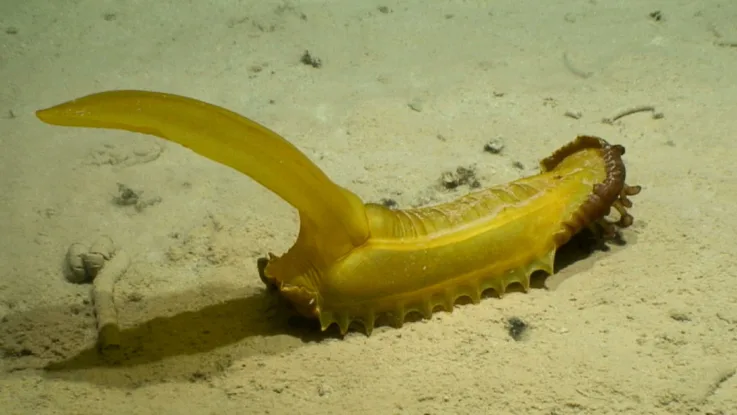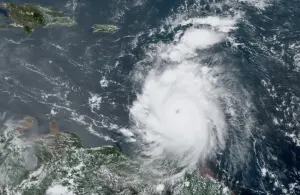
Meet the gummy squirrel - one of many creatures found on a deep sea expedition
There's a lot to discover in the deep ocean.
It’s a half-peeled banana? Nope.
A semi-melted water gun? Not even close.

(Courtesy: DeepCCZ expedition, Gordon & Betty Moore Foundation/NOAA)
It's a sea cucumber - a marine animal characterized by leathery skin and an elongated body.
This one is called a ‘gummy squirrel.’ We don’t know a lot about this creature, but scientists believe its yellow colour may be a survival adaptation to deter predators. In the wild, bright colours usually indicate the presence of toxic chemicals – and you can’t get much more vibrant than yellow.
A gummy squirrel, which measured 60 cm long by the way - was just one of the 55 odd creatures collected during a 2018 remote-operated vehicle expedition of the deep sea between Hawaii and Mexico, led by the Natural History Museum (NHM) in London.
The ROV combed the waters at a mind-boggling 5,000 metres below sea surface - equivalent to the height of about 9 CN Towers stacked on top of one another.
"About 150 years ago, the HMS Challenger expedition explored this area, but as far as I know, there hasn’t been much study done since that time," study lead author and NHM biologist Guadalupe Bribiesca-Contreras, told Live Science. "This part of the ocean has barely been touched."
So far, seven of the creatures collected have been confirmed as new species, and scientists are looking at an additional 32 of them to see if they're new to us as well.
Before the expedition, many of the animals were only seen in photos, videos, or in fossil forms. The expedition gave scientists a glimpse of the rare creatures in their natural habitat, providing insight into untouched ecosystems.
"Where they live this deep in the ocean can be challenging," Bribiesca-Contreras said. "There’s no light, their bodies are withstanding crushing pressure and there's little nutrition available."
A recently-published paper detailing the findings is available in the journal ZooKeys.










